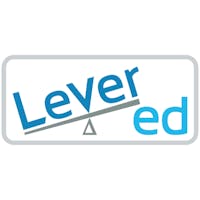As principal at Chula Vista School District’s Salt Creek Elementary, Lalaine Perez saw the need to better support a growth mindset around math in the years following the transition to California’s new Common Core standards. Although the district had successfully implemented conceptual approaches to math instruction for several years, the shifts in the new standards were challenging for some students. The result was a large achievement gap in math. “We knew we needed to do something to support all students,” says Perez, “especially English learners and students with disabilities.”
Just a short drive away, Mónica Ruiz, principal at Chula Vista’s Montgomery Elementary, was facing her own math challenges. Sixty-two percent of Montgomery students are English language learners (ELL). State test scores told Ruiz that all her students, and especially ELLs, needed math support.
Help arrived thanks to a phone call from Mitch Slater, an educator with 20 years of experience as a classroom teacher, math intervention specialist and administrator. Slater had developed Levered—an adaptive math instruction program—and he was looking for California schools to pilot the program in their fourth grade classrooms.
Perez listened to Slater describe his platform's alignment with the common core and ELL teaching approaches, as well as features that support differentiation and collaborative pencil and paper activities. She jumped at the opportunity to pilot the program in her school. The following year, Ruiz did the same.
Rocking the CAASPP
Both schools have since experienced outstanding increases in their California Assessment of Student Performance and Progress (CAASPP) scores. They attribute the success to increased student engagement, better support for English language learners during math instruction and more opportunities for differentiation—all thanks to Levered. Some highlights:
- Fourth graders at Salt Creek improved their CAASPP scores by 137% of the state average in the 2016/2017 school year—their first year using the platform—and by 172% the following year.
- Fourth graders at Montgomery improved their CAASPP scores by 164% of the state average in the 2017/2018 school year—their first year using the platform.
- Fourth grade ELLs at both schools grew their CAASPP scores by 252% of the state average in the 2017/2018 school year.
- Economically disadvantaged fourth graders at both schools grew their CAASPP scores by 184% of the state average in the 2017/2018 school year.


Both Ruiz and Perez say these stats reflect hundreds of compelling individual student success stories. Ruiz’s favorite anecdote is about a student with an Individualized Education Plan (IEP) who struggled with math until he started using Slater’s adaptive platform—and found ways to make connections to what he was learning. Now, “he’s always the first to share with me: ‘Look what I’ve done Ms. Ruiz!’” She says the tool’s language support and multiple opportunities for success kept him motivated.
The How and Why
Specifically, Perez and Ruiz point to four ways that Levered helps teachers meet students where they are and then propel them toward extraordinary gains in math learning:
1. Tools to support English language learners
Many of Ruiz’s ELL students are pulling what she calls “double weight.” She says, “Not only are they learning the language but at the same time they’re learning the content.”
Levered’s integrated strategies support SDAIE—an approach focused on teaching academic content to ELL students—without watering down the instruction; the platform provides students with access to core content in standards-based language. “Students can see examples. Text can be read to them. They can click on a glossary or watch a video,” says Ruiz. “There are so many functions that support English language learners.”
Thanks to those supports, Ruiz’s fourth grade ELL students improved their scores on the state math test by more than 60 percent. “It was phenomenal to see!” she says.
2. Built-in differentiation options
In a school that includes high performers, English language learners and students with disabilities, Perez says that teachers appreciate a digital curriculum that allows students to work at their own pace and level. The same is true for the educators at Ruiz’s school.
As students make their way through the interactive curriculum at their own speed, teachers can monitor each student’s progress on a dashboard. The platform will continue to offer relevant math problems as a student moves toward mastery. If a student is struggling, the teacher is notified through the dashboard and can immediately intervene. Teachers can then meet with students in small groups, using the platform’s data to differentiate based on language ability, math ability or both.
At both schools, students performing at all four levels of the CAASPP standards—i.e. exceeds, meets, nearly meets and does not meet—have seen growth in their learning. Students’ attitudes toward and engagement in math has also skyrocketed. A pilot study at Chula Vista found that 76% of fourth grade students felt Levered made it easier for them to learn new ideas in math class, and 78% reported that they wanted to use the curriculum the following school year. In addition, 100% of teachers reported that their students developed more confidence in math while using the platform.
3. Next-level blended learning
Perez believes that the platform’s blended approach to learning supports her school’s movement toward social and emotional learning (SEL). “The teacher-student relationship has a significant impact on student achievement in the classroom,” she says. “Students aren’t just told, ‘Work on your math program for the next 30 minutes.’”
Instead, teachers work closely with students through whole-class opening lessons, small group lessons informed by dashboard data, and one-on-one interactions with specific students. At the same time, Perez says that teachers ask, “Are students able to articulate how to solve this problem? Are they able to explain and justify their answer to their partner?” She explains, “Those things can be difficult to gauge on a computer program because there's not a human person grading that.”
In a school with a high ELL population, a blended approach to learning is critical because it “provides students with an opportunity to meet the state’s speaking and listening standards,” says Ruiz. “They have dialogue and discussion connected to both real-world experiences and the standards.” She adds, “With Levered, students get the discussion piece, the collaboration piece, the listening piece and the processing piece that enhances those speaking abilities.”
4. Creating equitable learning opportunities
Ruiz says the platform’s differentiation, adaptive learning, and teacher dashboard data combine to offer her students one key benefit: equity. She believes that the adaptive program “provides kids with equitable opportunities for access and multiple opportunities for learning success.” What’s more, “it challenges every student, whether you’re a high achieving student exceeding expectations on the state test or you haven’t met expectations and you need scaffolds to move you along.”
Ruiz adds, “I think of it like this: Everybody needs shoes. But if you give everybody in a fourth grade class size ten shoes, that’s not equity; not everybody wears size ten. Math lessons are similar, everybody needs to know the standards but they may need to learn them differently. That’s what Levered does.”



